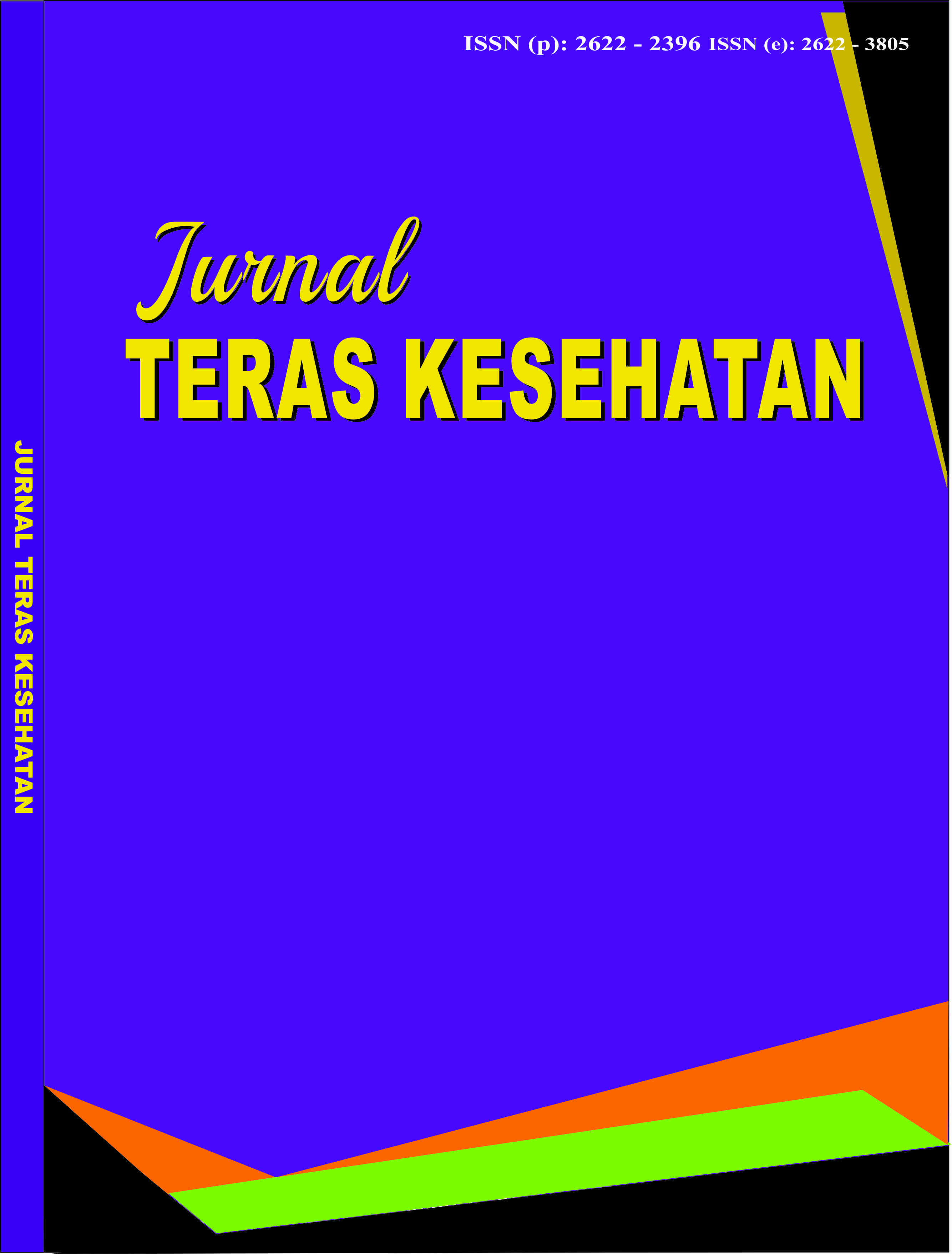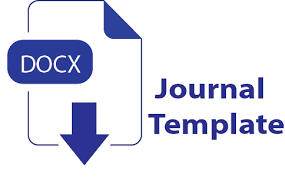Hubungan Pola Bermain Dengan Memory Digit Anak Autism Spectrum Disorders Di Surakarta
DOI:
https://doi.org/10.38215/jtkes.v8i1.165Keywords:
autism spectrum disorders, children, digit memory, play patternAbstract
Autism spectrum disorders are characterized through impaired social and communication skills, repetitive behaviors, unusual hobbies and differences perception of sensory stimulation. Developmental disorders in kids with ASD can affect the early development of play skills, resulting in unusual or limited play patterns in children with ASD. The decline in cognitive abilities in children with ASD is associated with working memory, which is the ability to remember something. The research design used is correlational with a cross-sectional approach. The sample for this study consisted of 32 people interviewed using the purposive sampling technique. Facts evaluation changed into accomplished using Pearson's product moment parametric statistical test. Play patterns of kids with autism spectrum disorders in Surakarta are on the average threshold, while the digit memory ability of youngsters with autism spectrum disorders in Surakarta is under the common restrict.
Downloads
References
Adiputra, I. M. S., Trisnadewi, N. W., Oktaviani, N. P. W., Munthe, S. A., Hulu, V. T., Budiastutik, I., Faridi, A., Ramdany, R., Fitriani, R. J., Tania, P. O. A., Rahmiati, B. F., Lusiana, S. A., Susilawaty, A., Sianturi, E., & Suryana. (2021). Metodologi Penelitian Kesehatan.
Amin, N. F., Garancang, S., & Abunawas, K. (2023). KONSEP UMUM POPULASI DAN SAMPEL DALAM PENELITIAN Nur. Jurnal Kajian Islam Kontemporer, 14(1), 103–116.
Bosen, A. K., Sevich, V. A., & Canno, S. A. (2021). Forward Digit Span and Word Familiarity Do Not Correlate With Differences in Speech Recognition in Individuals With Cochlear Implants After Accounting for Auditory Resolution. 64(August), 1–13.
Bouzy, J., Brunelle, J., Cohen, D., & Condat, A. (2023). Transidentities and autism spectrum disorder: A systematic review. Psychiatry Research, 323(March). https://doi.org/10.1016/j.psychres.2023.115176
Buschman, T. J. (2021). Balancing Flexibility and Interference in Working Memory. Annual Review of Vision Science, 7, 367–388. https://doi.org/10.1146/annurev-vision-100419-104831
Dewi, E. S. (2021). Klasifikasi Autism Spectrum Disorder Menggunakan Algoritma Naive Bayes. MATHunesa: Jurnal Ilmiah Matematika, 9(1), 27–35. https://doi.org/10.26740/mathunesa.v9n1.p27-35
Donovan, E. R., & Sheppard, M. (2020). Autism spectrum disorders andDonovan, E. R., & Sheppard, M. (2020). Cases on Teaching Sexuality Education to Individuals With Autism, 128–144. Cases on Teaching Sexuality Education to Individuals With Autism, 128–144. https://doi.org/10.4018/978-1-7998-2987-4.ch008
Elbeltagi, R., Al-Beltagi, M., Saeed, N. K., & Alhawamdeh, R. (2023). Play therapy in children with autism: Its role, implications, and limitations. World Journal of Clinical Pediatrics, 12(1), 1–22. https://doi.org/10.5409/wjcp.v12.i1.1
Habsy, B. A., Azizah, L. N., Aji, O. Z., & Walidah, Z. (2023). Tinjauan Kesulitan Belajar Karena Gangguan Perkembangan (Autism, ADHD, dan Down Syndrome). Tsaqofah, 4(1), 361–377. https://doi.org/10.58578/tsaqofah.v4i1.2194
Ilyas, A. S. (2020). Hubungan Pola Bermain Dengan Perkembangan Kognitif Anak Usia Pra Sekolah Di Taman Kanak-Kanak Kencana Kecamatan Tobadak Kabupaten Mamuju Tengah. Jurnal Ilmiah Kesehatan Diagnosis, 15(1), 10–13. https://doi.org/10.35892/jikd.v15i1.307
Kasari, C., Chang, Y.-C., & Patterson, S. (2013). Pretending to Play or Playing to Pretend: The Case of Autism. American Journal of Play, 6(1), 124–135. http://www.ncbi.nlm.nih.gov/pubmed/26617954%0Ahttp://www.pubmedcentral.nih.gov/articlerender.fcgi?artid=PMC4662258
Oktaviani, A., & Fatmawati, S. (2022). Gambaran Karakteristik Orang Tua Dengan Anak Autism Spectrum Disorder ( ASD ) Di Sekolah Luar Biasa ( SLB ) Surakarta. Jurnal Ilmu Kesehatan Mandira Cendikia, 2, 375–386. https://journal-mandiracendikia.com/jikmc
Pratama, T. G., Ridwan, A., & Prihandono, A. (2023). Deteksi Dini Asd (Autism Spectrum Disorder) Menggunakan Machine Learning. Jurnal Ilmu Komputer Dan Matemtika, 4(2), 44–51.
Rabiee, A., Vasaghi-Gharamaleki, B., Samadi, S. A., Amiri-Shavaki, Y., & Alaghband-Rad, J. (2020). Working memory deficits and its relationship to autism spectrum disorders. Iranian Journal of Medical Sciences, 45(2), 100–109. https://doi.org/10.30476/ijms.2019.45315
Setyawan, D. A. (2022). Statistika Kesehatan Analisis Bivariat Pada Hipotesis Penelitian. In Tahta Media Group.
Wagle, S., Ghosh, A., Karthic, P., Ghosh, A., Pervaiz, T., Kapoor, R., Patil, K., & Gupta, N. (2021). Development and testing of a game-based digital intervention for working memory training in autism spectrum disorder. Scientific Reports, 11(1), 1–14. https://doi.org/10.1038/s41598-021-93258-w

Downloads
Published
Issue
Section
License
Copyright (c) 2025 Jurnal Teras Kesehatan

This work is licensed under a Creative Commons Attribution-ShareAlike 4.0 International License.
Authors who publish articles in Jurnal Teras Kesehatan agree to the following terms:
- Authors retain copyright of the article and grant the journal the right of first publication with the work simultaneously licensed under a CC-BY-SA or the Creative Commons Attribution–ShareAlike License.
- Authors can enter into separate, additional contractual arrangements for the non-exclusive distribution of the journal's published version of the work (e.g., post it to an institutional repository or publish it in a book), with an acknowledgment of its initial publication in this journal.
Authors are permitted and encouraged to post their work online (e.g., in institutional repositories or on their website) prior to and during the submission process, as it can lead to productive exchanges, as well as earlier and greater citation of published work (See The Effect of Open Access)











